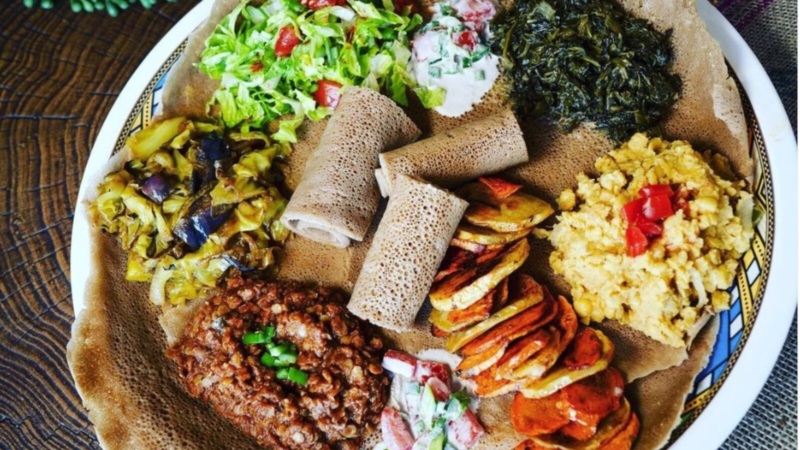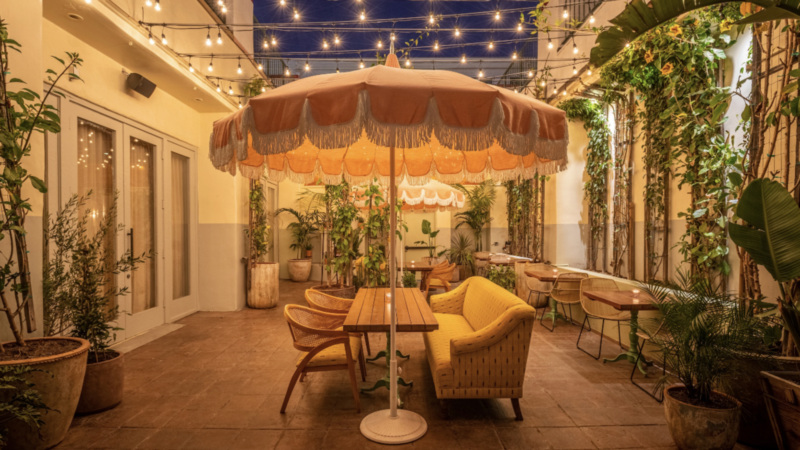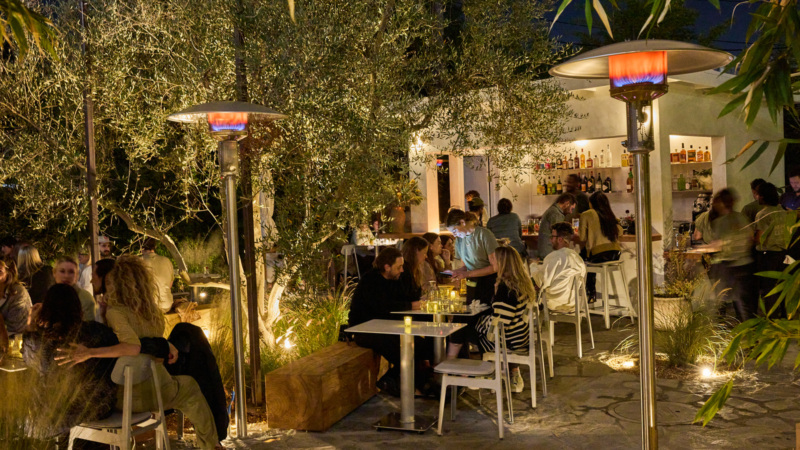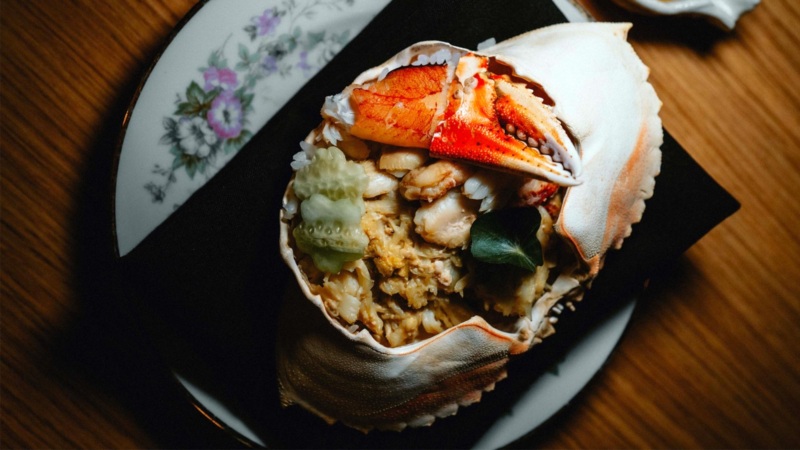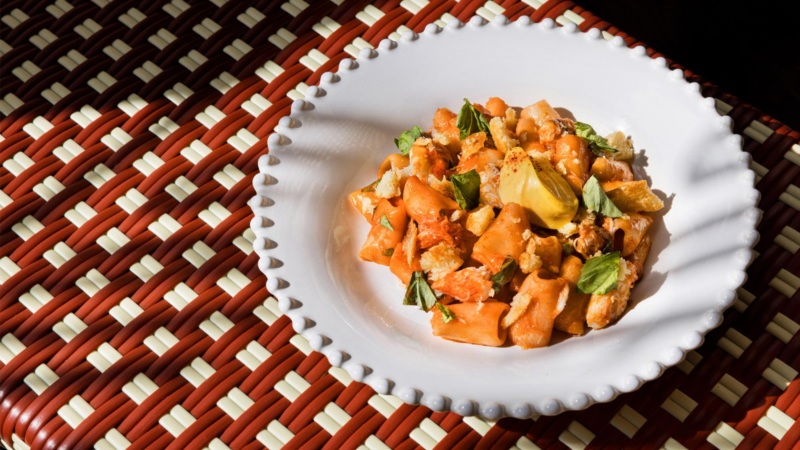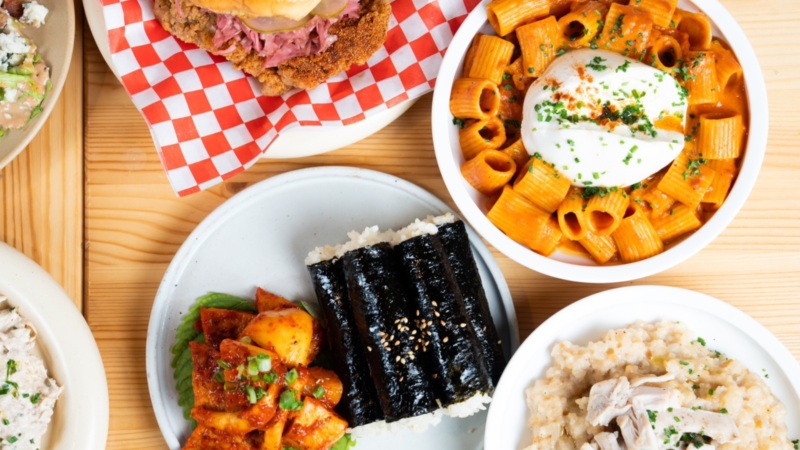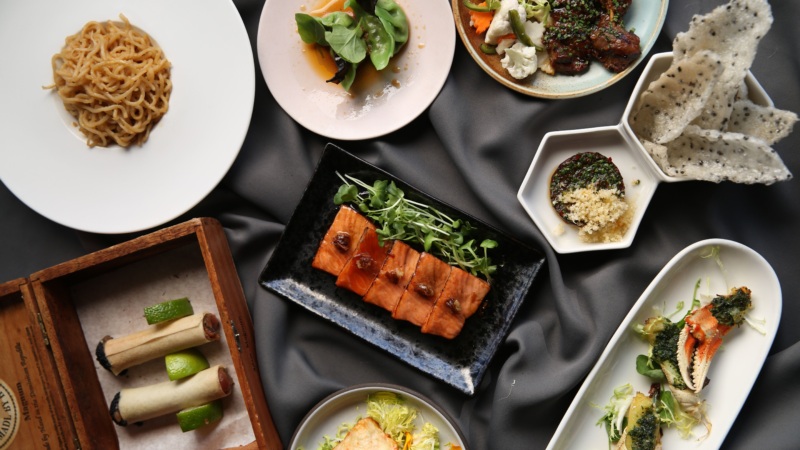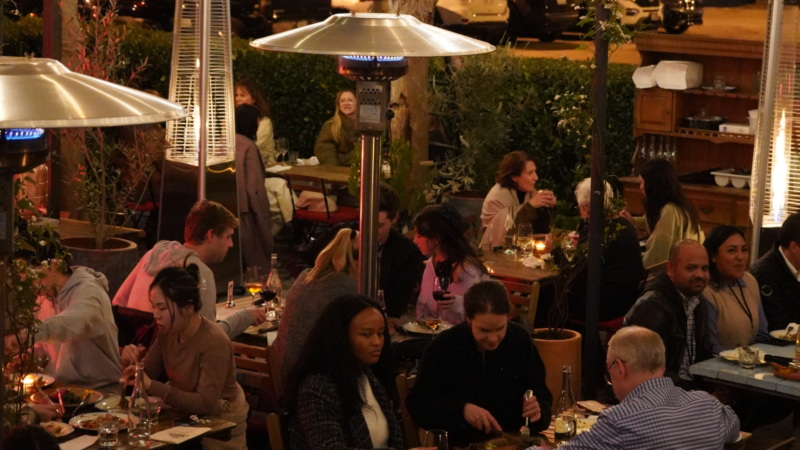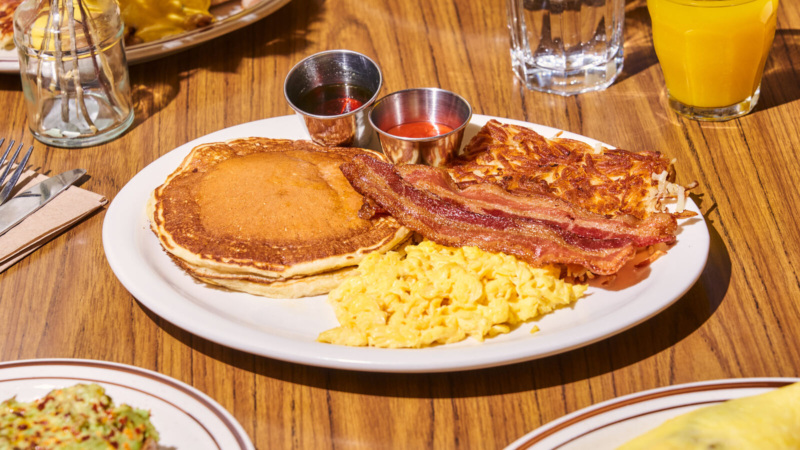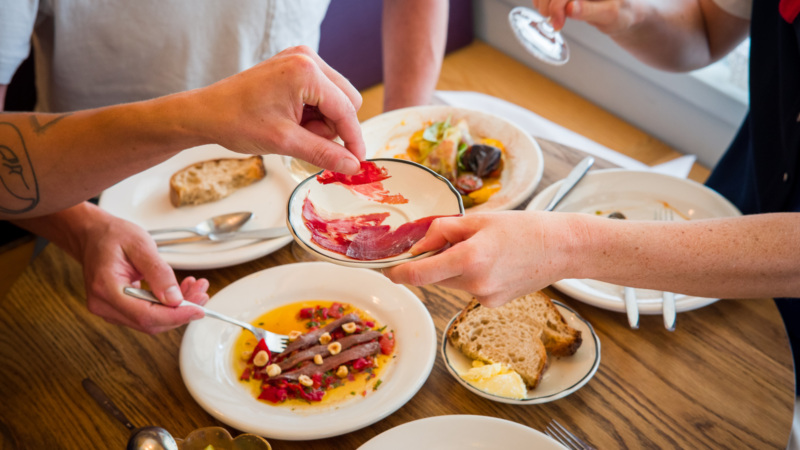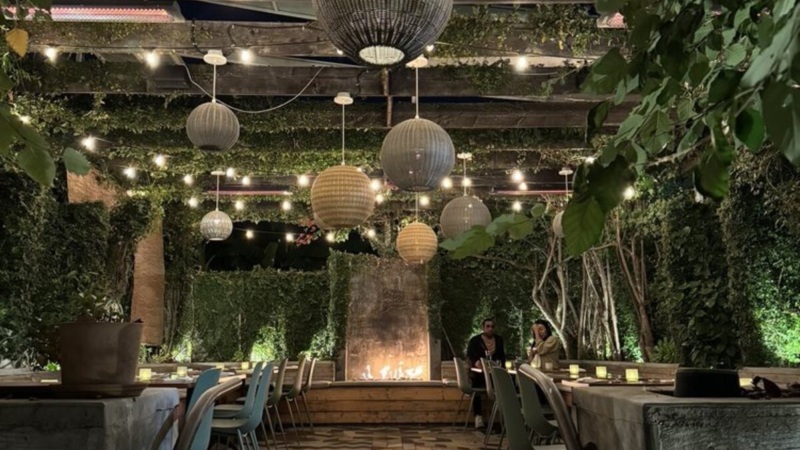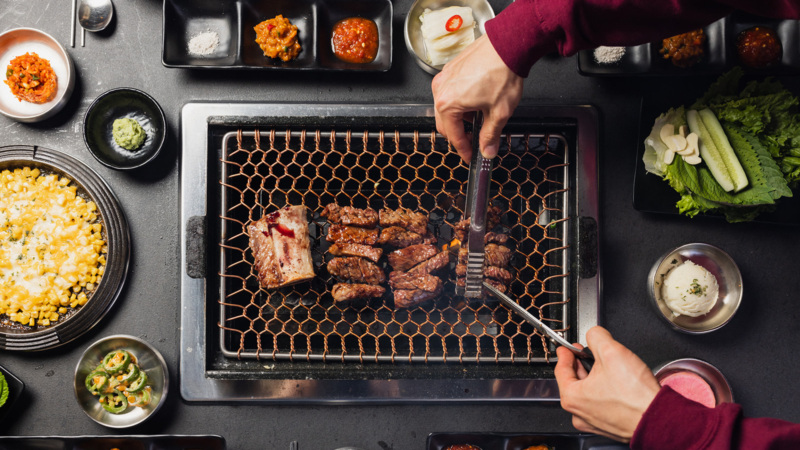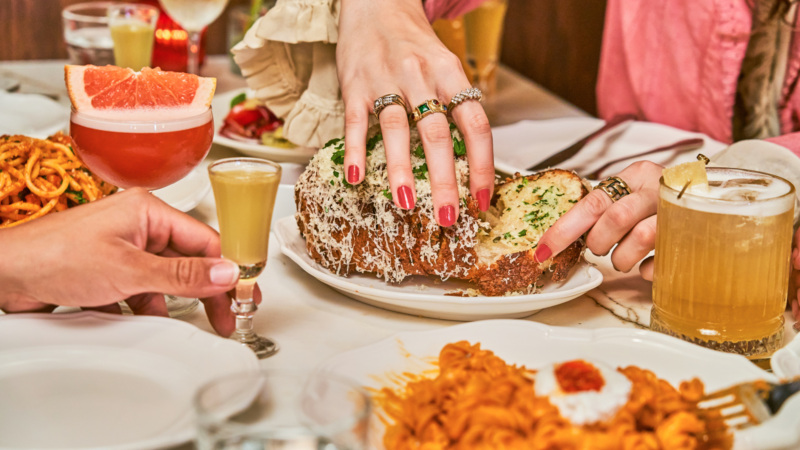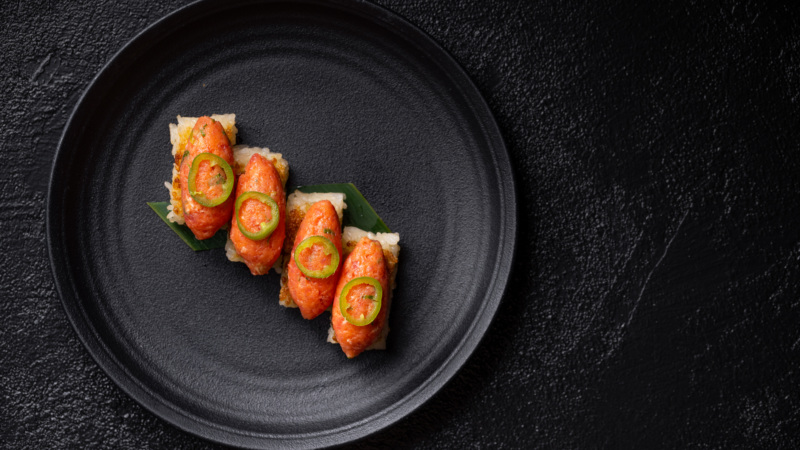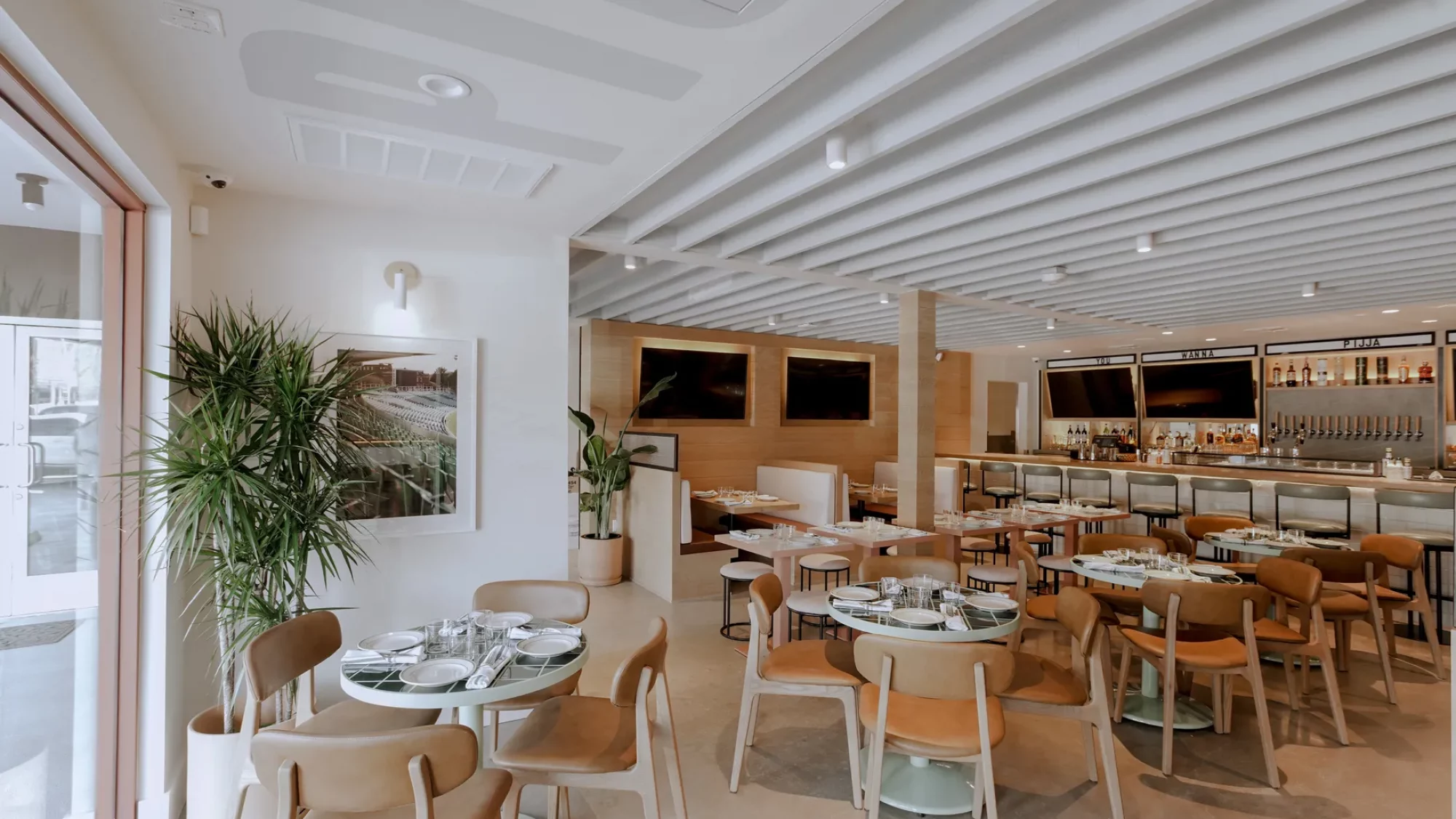
The Indian Sports Bar Wonder That Is Pijja Palace, In Five Dishes
Pijja Palace is the sort of new opening that you can only find in L.A.: a chef-driven Indian sports bar in a Silver Lake strip mall. They serve appetizers, wings, chicken tenders, sliders, pasta, pizza, and soft serve ice cream, all of which are made wholly Indian. Don’t call the food Indian-Italian, though; the best way to think of it is as classic American bar food, but more zesty.
And sure, 13 TVs cover the walls, but unlike at a typical sports bar, the decor is appropriate for a sit-down meal. The restaurant’s bright interior is awash in warm shades of pale pink, orange, and teal. And the logo is a slice of pijja — the Indian word for pizza — with its tongue out and sunglasses on, cheese dripping off its body. It’s a lot. And it’s a lot of fun.
Onwer Avish Naran was born and raised in Echo Park, went to culinary school in Napa, then worked as a cook at fine-dining Indian restaurants in San Francisco and New York before getting his degree in restaurant management from the Institute of Culinary Education. After that, he came back to L.A. to open his own kind of Indian restaurant; one that would make sense in his hometown. Enter Pijja Palace, an ode to “the best sports city in the world” and a way for Naran to cleverly express his background. “We don’t use tweezers here, but we still want to think about food comprehensively and keep it creative,” he says. His chef, Miles Shorey, was the sous chef at Roberta’s in Culver City and the opening chef at Bel Air’s now-closed Bistro Jolie.
Together, the duo is serving up nostalgic comfort food with a refreshing point of view. Below are five dishes that tell the story of Pijja Palace, but keep your eyes peeled for secret menu items, too. Shorey says they’ve been preparing off-menu dishes and releasing them at random into the dining room as a way to experiment. He also makes one banoffee pie every night — eight slices only — with a digestive biscuit crust, caramel and banana filling, and a whip infused with jaggery, dried mango, cinnamon, nutmeg, and cloves. Be sure to ask if there’s any left when it’s time for dessert.
- Five Dishes That Reveal How Bar Restaurant Flips the Script on French Food
- David Rosoff Is Back in Silver Lake With Bar Moruno (But That’s Not All)
- Wes Avila Wants You to See His Mexican Cooking At Ka’teen As Pure L.A.
- How Mother Wolf’s Evan Funke Puts His Stamp on Roman Food, In Five Dishes
- The Resy Guide to the Best Pizza In Los Angeles (Yes, Los Angeles)

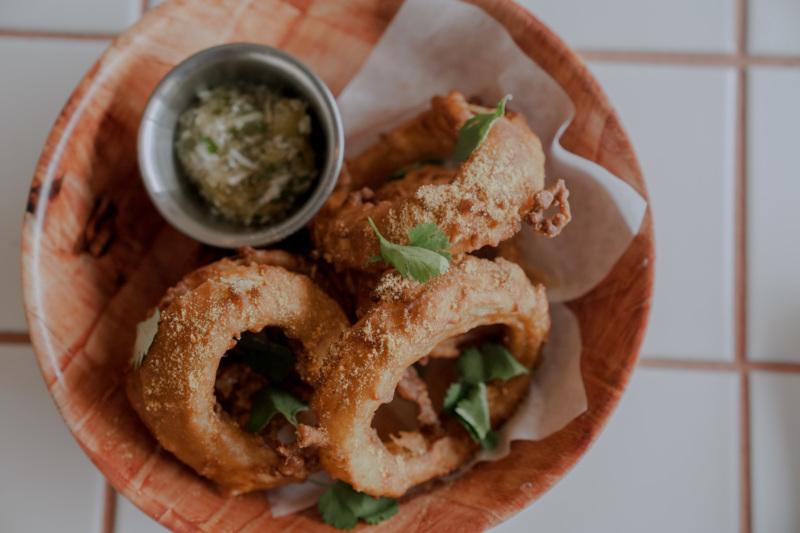
1. Dosa onion rings
For the dosa onion rings, thick rounds of yellow onion are dipped in a dosa batter made of rice and lentils. The batter ferments for two days, which imparts a slightly sour flavor. Then, each ring is dredged in chickpea flour and fried. The resulting pile of fried savory snacks boasts a creamy interior and crusty shell, and is served with a bright green mango-coconut chutney that’s both spicy and sweet. “A lot of people do buttermilk batters, but I think it gets too heavy. I like that ours have [a similar] look, but shatter when you bite into them,” Shorey says.
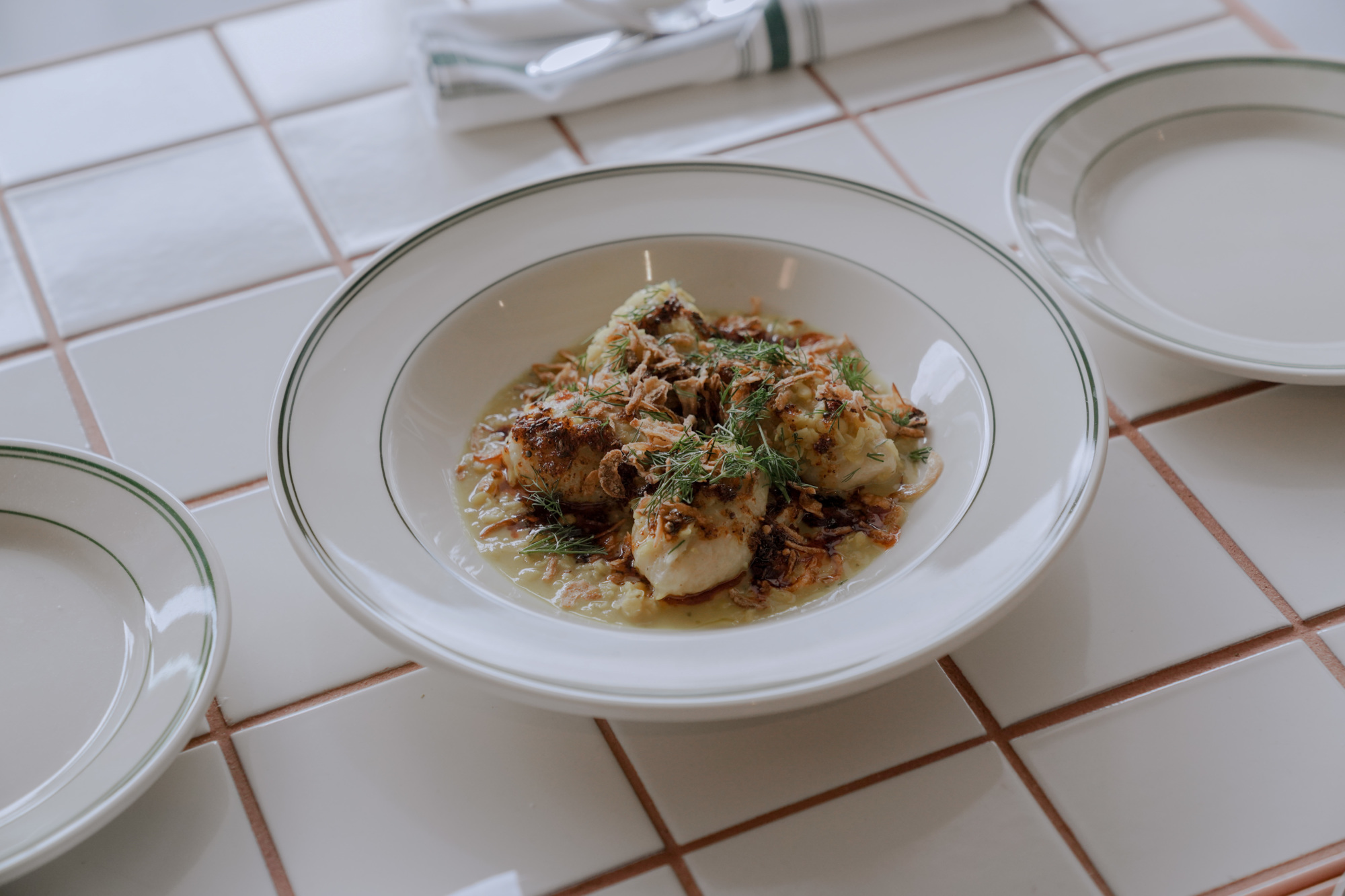
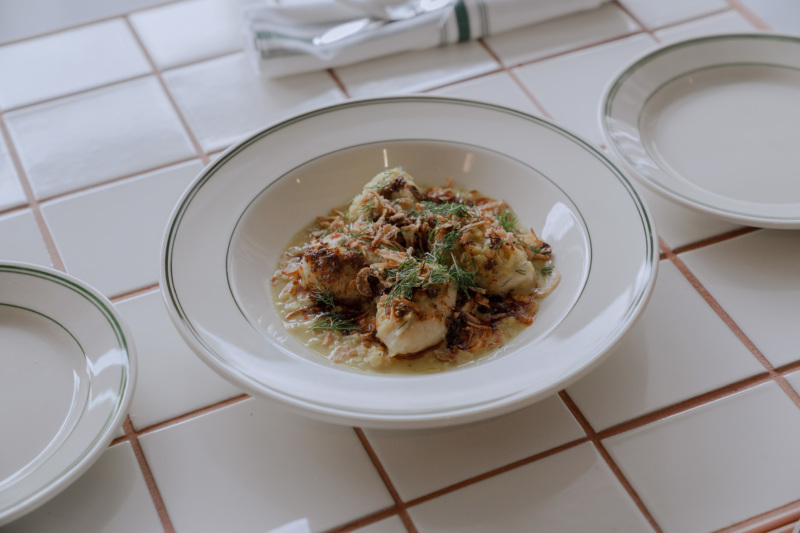
2. Chaas dumplings
The chaas dumplings are done Southern-style, so don’t expect filling wrapped in dough — chicken and dumplings is a better reference point here. Butter, milk, flour, and a bit of cheddar cheese are folded together to make the dough, which is then hand-formed into oval-shaped orbs that are poached. The texture is meant to be soft enough to break apart with a spoon, with a “spongy, bouncy chew,” per Shorey. To complete the dish, four dumplings are plated atop a masoor dal made of lentils and finished with chhonk (spices tempered in fat), dill, and crunchy fried onions.
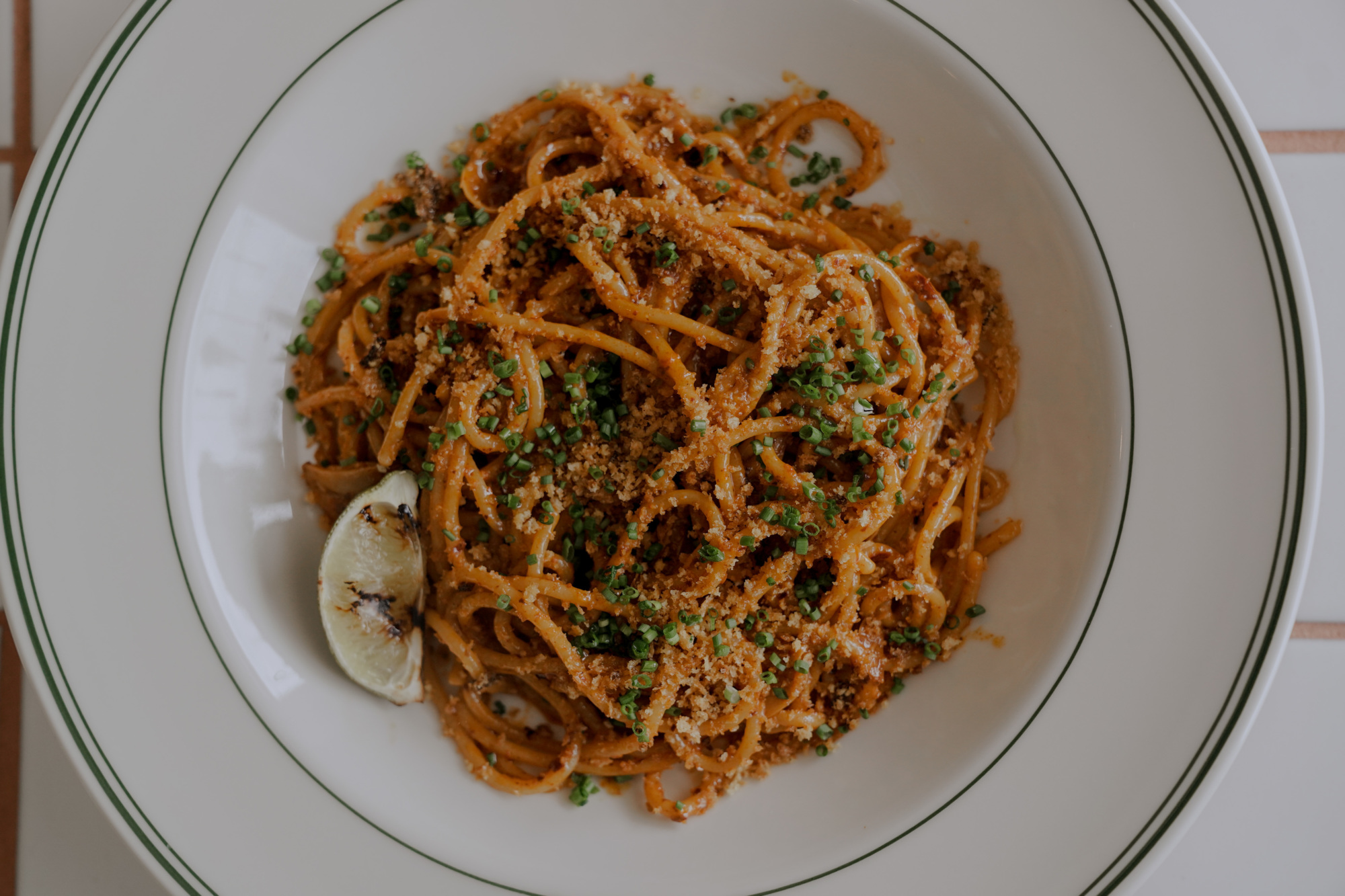
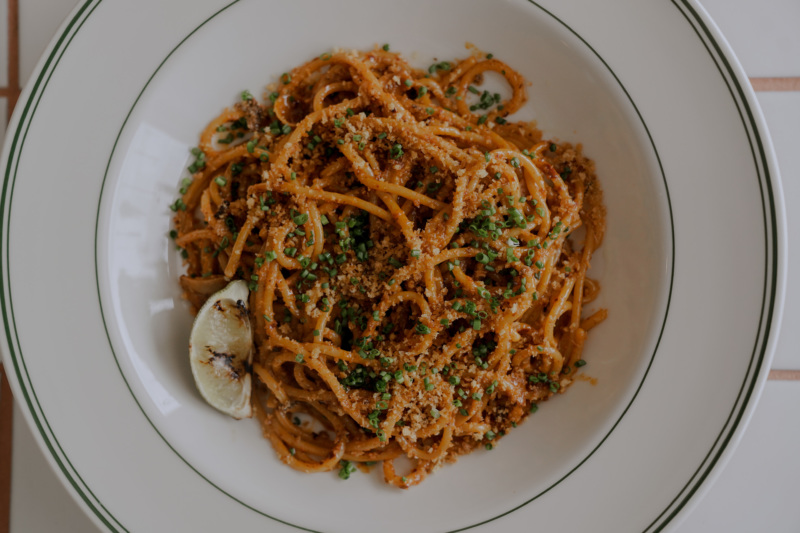
3. Tandoori spaghetti
All of the pasta at Pijja Palace is made in-house, from the rigatoni in malai pink sauce to the rickshaw-shaped pasta with cilantro-mint pesto, cashews, and Parmesan. To make the tandoori spaghetti, they create a punchy oil infused with smoked chiles, ginger, garlic, and lime that’s then tossed with spaghetti. The dish is topped with breadcrumbs and served with a wedge of charred lime. “We don’t have a tandoor, so we wanted to take the flavors that you typically find in something that’s tandoori and put them into spaghetti,” Naran says.

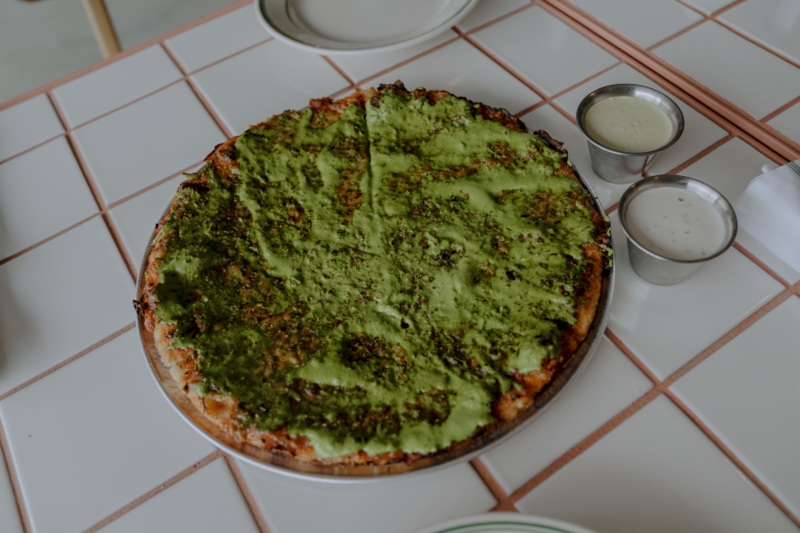
4. Green chutney pizza
At a place like Roberta’s, the dough is the “star of the show,” says Shorey. At Pijja Palace, toppings are the primary focus. For this reason, he prefers a more shelf-stable yeast-based dough over a naturally fermented option like what’s used at Roberta’s (which imparts a puffier structure and a tangier flavor). “It would take away from what we’re trying to do here, which is showcase Indian flavors,” he says. The pizza is made in the New Jersey tavern style with thin, crackly crusts.
Their green chutney pijja is a nod to a similar pizza at LaVentina’s, a pizzeria in Lakewood, which Naran has been eating since he was a kid. It comprises fenugreek-laced tomato sauce, mozzarella, green chile chutney, and crunchy masala. That last ingredient is what makes Pijja Palace’s pie unique from its source dish, and is inspired by another formative pizza Naran experienced in Venice, Italy. “There were a bunch of Bengali people cooking the pizza at this restaurant and when they saw us come in, they asked if we wanted them to kick it up a notch and do it desi style,” he recalls. That meant topping the pizza with a coarse masala for an extra dose of texture and flavor. “I thought it was a lot of fun, and it’s stuck with me ever since,” he adds.

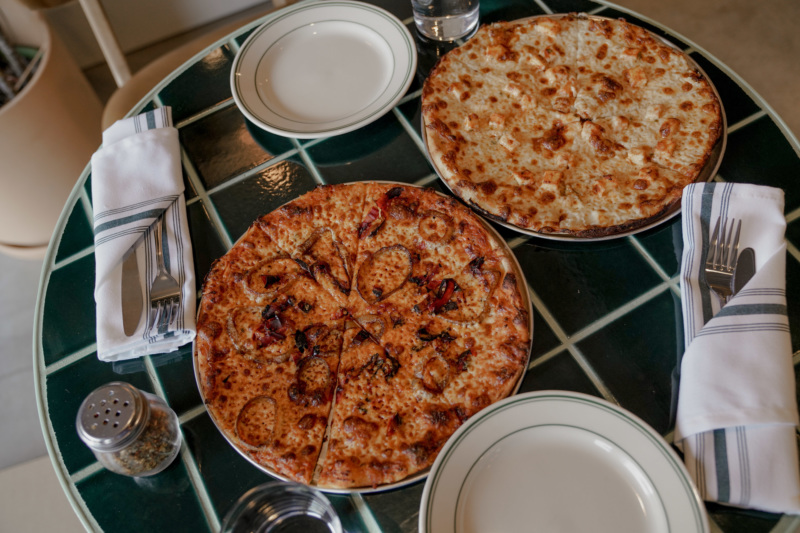
5. Build-your-own pizza
There are only two composed pizzas on the Pijja Palace menu — the green chutney, and a saag pijja. Otherwise, the kitchen prepares a range of toppings for build-your-own pies: bell pepper jalfrezi, paneer cooked in kadai sauce, pulled chicken tikka masala, housemade Goan sausage, crispy fried eggplant, and more. “So many restaurants are pre-building stuff for you, and we do that here, too, but we also like the creativity of build-your-own,” Naran says. “There’s a place for Domino’s and Papa John’s, and I think we can do that in a cool way here.”
That said, the duo recommends picking no more than two toppings when designing your own pijja. As Naran says: “All of the flavors are pretty big.”


